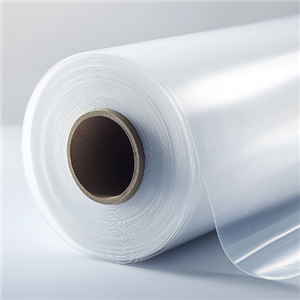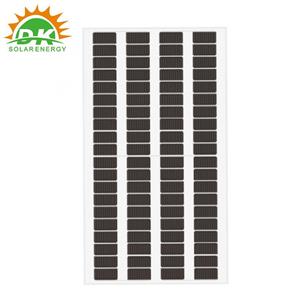Industry News
-
2811-2025
Perovskite Module Mass Production Efficiency Surpasses 22%
Perovskite PV modules have achieved a 22% mass production efficiency, on par with crystalline silicon modules. Single-junction and perovskite/crystalline silicon tandem technologies advance in parallel, with the latter’s R&D efficiency hitting 34.85%. China has built multiple GW/100MW-level production lines, with 50MW sales expected in 2025. Its low cost and flexibility suit BIPV, with 20GW global shipments projected by 2030.
-
0611-2025
Solar Energy Turns into a "Savings Pot" – The "Solar-Storage Duo" Makes 2025 Energy Life Amazing!
In 2025, the "solar-storage duo" of solar panels and batteries has gone mainstream, evolving from professional gear to daily energy stewards. Thin, flexible, and easy to install, they power homes (balconies as mini power stations), camping trips, remote areas, and even desert restoration. Boosted by perovskite and sodium-ion tech, they're smarter, more cost-effective, and eco-friendly, enabling energy independence and supporting global decarbonization.
-
1510-2025
High-efficiency transformation of PV Modules: Precise selection of solar ribbons becomes critical, full-spec supply drives performance release
In the critical period of PV modules transforming towards "higher efficiency, longer service life, and better scenario adaptation", the selection of solar ribbons has changed from "passive adaptation" to a core link of "active optimization". Enterprises with full-specification solar ribbon supply capabilities and customized services can help module enterprises establish a "battery technology - power target - application scenario" trinity selection system, fully unlock the performance potential of modules, and provide solid supply chain support for the goal of grid parity in the PV industry.
-
2608-2025
ETFE film of characteristics and typical applications by thickness
The thickness of ETFE (ethylene-tetrafluoroethylene copolymer) — ranging from 25μm to over 1mm, with composite structures reaching the millimeter level — directly determines its mechanical properties, light transmittance, etc. It is divided into three types for PV and other fields: Ultra-thin (25-50μm): Extremely lightweight, highly flexible, ~95% light transmittance, suitable for flexible PV encapsulation and portable energy equipment; Conventional (50-200μm): Balanced performance, accounting for over 70% of global consumption, used in BIPV membrane structures and rigid PV protection; Thick-walled/composite (200μm+): High strength and corrosion resistance, applied in PV power plant protection, industrial linings and special building load-bearing structures.
-
1108-2025
What are the advantages and disadvantages of the flexible solar modules with adhesive backing ?
Self-adhesive flexible solar modules offer key advantages: easy installation without brackets/drilling, cutting steps by 70% and boosting efficiency by 40%; adaptability to curved/irregular surfaces; lightweight (4-5kg/m²) for load-sensitive areas; reduced base material damage and waterproof risks; suitability for temporary/mobile use. Disadvantages include limited durability (affected by temperature/UV), high temperature sensitivity, hard maintenance/replacement, strict base material compatibility, and cost-performance conflicts.
-
1807-2025
Bright Market Prospects for Greenhouse Solar Modules, Facilitating Synergistic Development of Agriculture and Energy
Greenhouse solar modules show bright prospects. With strong demand, they solve energy issues in agriculture. Technological innovations like spectral filtering boost efficiency. Policy support drives growth, aiding energy transition and agricultural development.
-
2406-2025
The 18th (2025) International Solar Photovoltaic and Smart Energy, Energy Storage and Battery Technology and Equipment (Shanghai) Exhibition
On June 10, the 18th (2025) International Solar Photovoltaic and Smart Energy & Energy Storage and Battery Technology and Equipment (Shanghai) Exhibition opened at the National Exhibition and Convention Center (Shanghai). Over 3,600 companies from 95 countries showcased products spanning the entire photovoltaic industry chain. Advanced technologies like TOPCon and perovskite tandem cells, along with integrated photovoltaic - energy storage solutions, were highlights. The event also featured forums on industry trends. Lasting until June 13, this exhibition serves as a crucial platform for global cooperation, innovation, and the push towards green energy transition.
-
0906-2025
Key Differences Between Double-sided and Single-sided Fluorinated Backsheets for Solar Panels
This article focuses on the advantages and disadvantages of double - sided and single - sided coated fluorinated backsheets for photovoltaic modules. Double - sided coated ones offer excellent weather resistance, high mechanical strength, and good compatibility, but they are costly, less environmentally friendly, and heavy. Single - sided coated backsheets have cost and weight advantages, and better environmental performance, yet their weather resistance is slightly weaker, the process is more complex, and market recognition is low. Overall, the choice between them depends on specific project requirements and application scenarios.
-
2305-2025
The Critical Impact of Electrical Connection Materials on PV Module Performance
Electrical connection materials are crucial components in photovoltaic (PV) modules for achieving current conduction, and their performance directly impacts the module's conductive efficiency, reliability, service life, and safety. The following analysis explores the specific impacts of core materials such as solder ribbons, busbars, and junction boxes on module performance :
-
2404-2025
The difference and application of Integrated and Split Photovoltaic Junction Boxes in the PV Industry
Photovoltaic junction boxes are crucial components in PV modules for connection and protection. Integrated ones have a simple structure with one box housing diodes and cables, offering low - cost and easy installation. However, they face heat - dissipation and resistance issues in high - power applications. Split - type junction boxes consist of multiple boxes, each with one diode and separated positive/negative cables. They have excellent heat - dissipation, can boost module power and reduce cable usage, yet are costlier and require more complex installation. The former suits small - scale distributed projects, while the latter is more suitable for large - scale ground - mounted power plants.




